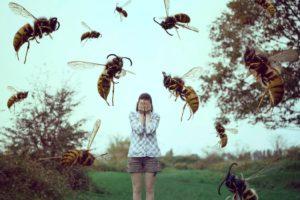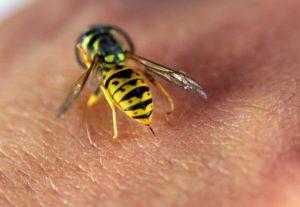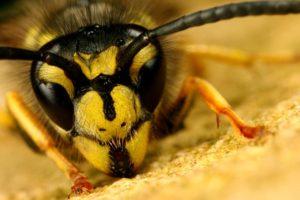How a wasp bites: the sting and jaw of a predatory insect
Those who like to relax in nature have come across biting hymenoptera. Not isolated cases when a person was stung and bitten by a wasp. To attack, they often use the jaw and sting - real means of self-defense.
The nature and features of wasps
Wasps are stinging insects. Unlike bees, they have a rather absurd character. Insects can rush first at individuals that are many times larger than their size. When the second individual is nearby and hears the attack of the first, it is happy to join.
Animals are predators and sweet lovers at the same time. When they feed offspring, they look for protein for children. Adults prefer to eat sweet juice, nectar, sweet fruits. At risk are sweet desserts left unattended.
wasp sting
A wasp organ is called a sting, which pierces the tissue of the victim and injects poison. It is movable, pointed, connected to special glands that secrete poison.
The sting of the wasp is located on the back of the abdomen, it pierces the skin quickly and painfully. Together with a puncture of the skin, poison is introduced, which negatively affects. With allergic manifestations, there may be severe intoxication and anaphylactic shock.
wasp jaw
The jaws of a wasp are called mandibles or mandibles. They are paired, have jagged chitin at the end. A feature of the oral apparatus of the wasp is both gnawing and licking.
This means that the wasp can dig with its jaws, lick nectar, build a dwelling and dig. The oral apparatus is also adapted for the destruction of prey: in simple terms, wasps bite.
This structure of the jaws of the wasps provides her with convenience in nest building. They tear off and chew strong wood.
What to do if bitten by a wasp
A wasp sting is less painful than its sting. Therefore, it usually does not cause inconvenience. Moreover, in case of danger, the wasp first beats with its forehead, in order to warn. Separately, the bite does not occur, only along with the sting.
Read recommendations and a step-by-step guide to action for a wasp sting in the article linked.
Conclusion
The sting of a wasp is a cunning mechanism. Insects use it for self-defense in case of danger. No less dangerous are the jaws. It is better not to provoke wasps with loud noises or too sudden movements.


